
Swedish Lapland: The Untamed Beauty of the Arctic Circle
Discover the Arctic splendor of Swedish Lapland, a region where the midnight sun and northern lights create a magical backdrop for outdoor adventures and cultural immersion.
Swedish Lapland is a region of stunning natural beauty and rich cultural heritage. Nestled above the Arctic Circle, it is a land where the midnight sun and northern lights paint the sky with their mystical colors. This is a destination for those who seek adventure, tranquility, and a deep connection with nature. In the summer, Swedish Lapland is a paradise for hikers, anglers, and wildlife enthusiasts. The vast wilderness offers endless opportunities for exploration, from the towering peaks of the Kebnekaise mountain range to the serene waters of the Torne River. Visitors can experience Sámi culture, learning about traditional reindeer herding and enjoying local cuisine. Winter transforms Lapland into a snowy wonderland. The landscape is perfect for dog sledding, snowshoeing, and skiing. The Icehotel in Jukkasjärvi, built anew each year from ice and snow, is a must-see attraction. And, of course, the chance to witness the aurora borealis is a once-in-a-lifetime experience that draws visitors from around the world.
Local tips in Swedish Lapland
- Visit between December and March for the best chance to see the northern lights.
- Book a stay at the Icehotel early, as it is a popular attraction and fills up quickly.
- Pack layers and warm clothing, even in summer, as temperatures can be unpredictable.
- Try local Sámi dishes like suovas (smoked reindeer) for an authentic culinary experience.
- Hire a local guide for outdoor activities to ensure safety and gain insights into the region.
Swedish Lapland: The Untamed Beauty of the Arctic Circle
Swedish Lapland is a region of stunning natural beauty and rich cultural heritage. Nestled above the Arctic Circle, it is a land where the midnight sun and northern lights paint the sky with their mystical colors. This is a destination for those who seek adventure, tranquility, and a deep connection with nature. In the summer, Swedish Lapland is a paradise for hikers, anglers, and wildlife enthusiasts. The vast wilderness offers endless opportunities for exploration, from the towering peaks of the Kebnekaise mountain range to the serene waters of the Torne River. Visitors can experience Sámi culture, learning about traditional reindeer herding and enjoying local cuisine. Winter transforms Lapland into a snowy wonderland. The landscape is perfect for dog sledding, snowshoeing, and skiing. The Icehotel in Jukkasjärvi, built anew each year from ice and snow, is a must-see attraction. And, of course, the chance to witness the aurora borealis is a once-in-a-lifetime experience that draws visitors from around the world.
When is the best time to go to Swedish Lapland?
Iconic landmarks you can’t miss
Gammelstad Church Town
Explore Gammelstad Church Town, a UNESCO World Heritage site showcasing Sweden's rich history with charming wooden houses and a stunning church.

The SnowCastle of Kemi
Discover the mesmerizing SnowCastle of Kemi, a unique ice structure offering breathtaking winter experiences, dining, and enchanting activities.

Friluftsmuseet Hägnan
Explore the enchanting Friluftsmuseet Hägnan, an open-air museum that brings Sweden's rich cultural heritage to life amid beautiful natural surroundings.

Lapp Land grensmonument
Visit the Lapp Land Grensmonument for a unique glimpse into Sámi culture and the stunning landscapes of Swedish Lapland, a must-see for every traveler.

Lulea Swedish Lapland
Explore Luleå Swedish Lapland: A fusion of stunning nature, thrilling outdoor adventures, and rich cultural experiences await you in this enchanting Swedish destination.

Swedish Lapland Visitors
Explore the captivating beauty and rich culture of Swedish Lapland, a unique destination that offers adventure and serenity in nature's embrace.

Unmissable attractions to see
Gammelstad Church Town
Discover the charm and history of Gammelstad Church Town, a UNESCO World Heritage Site with over 400 wooden houses and a rich cultural heritage.

Santaworld
Experience the enchanting charm of Santaworld, a magical amusement park in Sollerön, perfect for families and winter enthusiasts alike.

Friluftsmuseet Hägnan
Explore Friluftsmuseet Hägnan in Gammelstad, an enchanting open-air museum showcasing Sweden's rich history and cultural heritage.

Guitars the Museum
Explore the captivating world of guitars at Guitars the Museum in Umeå, showcasing history, craftsmanship, and musical legacy.

Lejonströmsbron
Discover the breathtaking beauty and engineering marvel of Lejonströmsbron, a must-visit bridge in Skellefteå, Sweden.

Björnlandets Nationalpark
Discover the stunning beauty and diverse wildlife of Björnlandets Nationalpark, a must-visit destination for nature lovers in Sweden.

Bälingeberget
Explore the breathtaking landscapes and rich biodiversity of Bälingeberget, a serene nature preserve in Luleå, Sweden, perfect for outdoor enthusiasts.
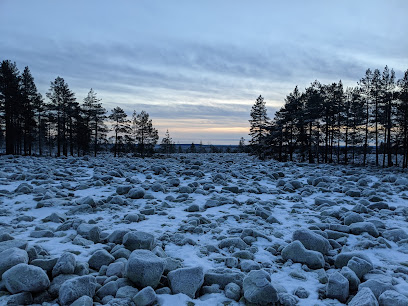
Lulea Adventure
Discover the exhilarating outdoor experiences and breathtaking landscapes at Luleå Adventure in Sweden, a must-visit attraction for thrill-seeking tourists.

Aurora Borealis Adventures
Experience the breathtaking Northern Lights at Aurora Borealis Adventures in Vindeln, Sweden - a top destination for unforgettable Arctic adventures.
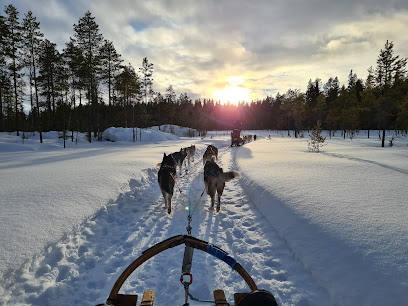
Wild Lapland
Discover the enchanting wilderness of Wild Lapland, where thrilling dogsled rides and cozy cabin rentals await amidst breathtaking landscapes.
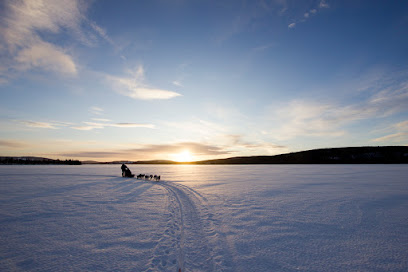
Gültzauudden
Discover Gülztauudden, Luleå's beloved city park, where lush landscapes and family-friendly facilities create a perfect urban retreat.

Openlappland - Chien de traîneau et Séjours en Laponie
Discover Openlappland: an enchanting Laponian haven for dog sledding, cozy accommodations, and breathtaking natural beauty.

Nederlulea Kyrka
Explore the beauty and history of Nederlulea Kyrka, a remarkable wooden church in Gammelstad, a UNESCO World Heritage Site, showcasing Swedish craftsmanship.

Lappland naturreservat
Experience the enchanting beauty of Lappland Naturreservat, a nature preserve that showcases Sweden's stunning landscapes and vibrant wildlife.

Lapp Land grensmonument
Explore the Lapp Land Grensmonument in Dorotea - a museum celebrating Sámi culture and heritage amidst stunning natural landscapes.

Essential places to dine
Aifur
Experience authentic Scandinavian cuisine at Aifur in Stockholm, where every dish tells a story from Sweden's rich history.

Hotell Laponia
Discover the serene beauty of Arvidsjaur at Hotell Laponia - your perfect getaway amidst nature's splendor.

Byske Gästgivargård AB
Discover the heart of Sweden through traditional dishes at Byske Gästgivargård - where every meal is a celebration of local flavors.

Bistron
Experience authentic northern Swedish cuisine at Bistron in Luleå - where local ingredients meet culinary artistry.

Doro Camp Lapland
Discover adventure and relaxation at Doro Camp Lapland—your gateway to Sweden's stunning wilderness and cozy accommodations.

Stadshuskällaren
Experience authentic Swedish cuisine in the historic ambiance of Stadshuskällaren at Stockholm City Hall.

The Corner
Discover delightful dining at The Corner in Skellefteå – where local flavors meet global cuisine in a cozy atmosphere.

Lapland Lodge
Experience authentic Swedish hospitality at Lapland Lodge, your gateway to adventure in the breathtaking landscapes of Arvidsjaur.

Old Town Lantern
Savor authentic Eastern European cuisine at Old Town Lantern in Stockholm's enchanting historic district.

Laponiakåtan
Discover traditional Sami flavors in a cozy setting at Laponiakåtan in Arvidsjaur – an unforgettable culinary journey awaits.

Nordic Lapand Camp and Resort
Discover the charm of Nordic Lapand Camp and Resort in Båtskärsnäs—your gateway to adventure amidst stunning natural beauty.

Markets, malls and hidden boutiques
Gammelstad Church Town
Explore Gammelstad Church Town, a UNESCO World Heritage Site with charming wooden houses and rich historical significance in northern Sweden.

Old Town Polkagriskokeri AB
Experience the enchanting blend of Swedish sweets and craftsmanship at Old Town Polkagriskokeri AB, a must-visit candy store in Stockholm.

Nordic Design
Experience the charm of Swedish craftsmanship at Nordic Design, where art meets functionality in the heart of Stockholm.
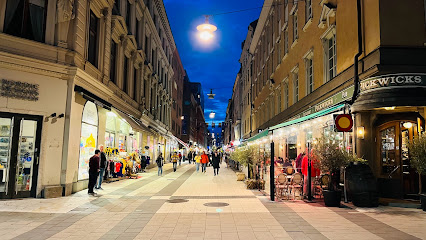
Handfaste The Viking Shop
Explore Handfaste The Viking Shop in Stockholm for exquisite Viking-inspired jewelry and unique handcrafted treasures that celebrate Nordic heritage.

Arctic Glas
Experience the captivating world of stained glass artistry at Arctic Glas in Arvidsjaur, where creativity and craftsmanship shine.
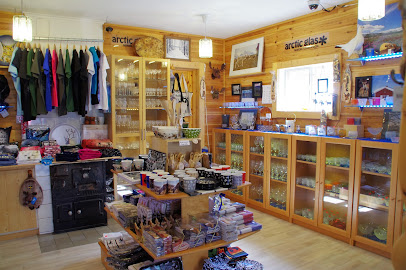
Järjagården
Discover Järjagården, a culinary oasis in Storseleby with outdoor adventures, fishing charters, and a welcoming atmosphere for all travelers.

Style Council Souvenir Shop
Explore the heart of Swedish craftsmanship at Style Council Souvenir Shop in Stockholm, where unique gifts meet rich cultural heritage.

The Old Town Souvenir
Explore the charm of Stockholm through unique gifts at The Old Town Souvenir, the heart of Swedish culture and craftsmanship.

Affären I Gamla Stan
Explore the enchanting Affären I Gamla Stan for exquisite lighting and home goods that capture the essence of Swedish design.

Snö of Sweden Concept Store
Explore Snö of Sweden Concept Store in Stockholm for exquisite jewelry that captures the beauty of Scandinavian design and craftsmanship.

Indus The Gift Shop
Shop for authentic Swedish souvenirs, unique gifts, and charming children's clothing at Indus The Gift Shop in Stockholm.

Dala Shop
Explore Dala Shop in Stockholm for unique Swedish gifts and traditional craftsmanship, from Dala horses to handcrafted treasures.

Sign of Sweden
Explore Sign of Sweden, the premier gift basket store in Stockholm, showcasing local delights and artisanal treasures for the perfect souvenir.

Lapland Eco Store AB
Experience the heart of sustainability at Lapland Eco Store AB, where eco-friendly products meet the beauty of Lapland.
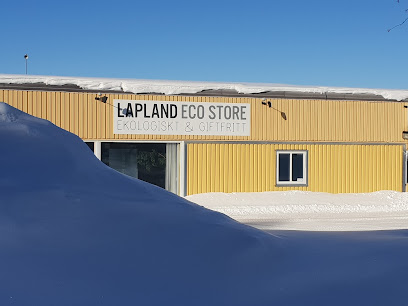
Classic Swedish Souvenir AB
Explore Classic Swedish Souvenir AB for authentic Swedish treasures and unique gifts, perfect for remembering your trip to Stockholm.

Essential bars & hidden hideouts
Hard Rock Cafe
Savor the taste of America in the heart of Stockholm at Hard Rock Cafe, where delicious food meets rock and roll history.

ICEBAR Stockholm by ICEHOTEL
Chill out at ICEBAR Stockholm by ICEHOTEL - an extraordinary cocktail experience in a frozen wonderland, perfect for adventurous travelers.

Rockbaren
Experience the electrifying atmosphere of Rockbaren in Gothenburg, where rock music meets delicious food and drinks in a vibrant nightlife setting.

O'Learys Luleå
Discover the essence of American dining and entertainment at O'Learys Luleå, where fun and flavor collide in a vibrant atmosphere.

The Flying Dog
Experience the vibrant nightlife and delectable dining at The Flying Dog, a must-visit bar and restaurant in the heart of Stockholm.

Tjoget
Experience the essence of Stockholm at Tjoget, where culinary creativity meets vibrant nightlife in a stylish setting.

Byske Gästgivargård AB
Experience the authentic taste of Sweden at Byske Gästgivargård, where traditional flavors meet warm hospitality.

The Londoner
Experience the charm of The Londoner Pub in Stockholm, where British hospitality meets Swedish flair in a lively and cozy atmosphere.

Cadierbaren
Experience the elegance of Cadierbaren, Stockholm's premier cocktail bar, where luxury and creativity blend in every sip.

Hotel Bishops arms
Discover the cozy warmth and culinary delights of Hotel Bishops Arms in Piteå, where local flavors meet hospitality.

Jössgården
Experience authentic Swedish cuisine and hospitality at Jössgården, a perfect blend of dining, relaxation, and cultural immersion in Sjulsmark.

Lucy's Flower Shop
Discover Lucy's Flower Shop in Stockholm, where exquisite cocktails meet a floral paradise, offering a unique blend of nature and mixology.

SJ Lounge Göteborg
Experience comfort and tranquility at SJ Lounge Göteborg, the perfect retreat for travelers in Gothenburg's Central Station.

The Corner
Discover the flavors of Skellefteå at The Corner, where local ingredients meet culinary creativity in a cozy dining atmosphere.

Röda Huset
Savor the exquisite flavors of brunch and cocktails at Röda Huset, a premier dining destination in Stockholm's vibrant culinary scene.

Local Phrases about Swedish Lapland
-
- HelloHej
[hey] - GoodbyeHej då
[hey doh] - YesJa
[yah] - NoNej
[nay] - Please/You're welcomeTack
[tahck] - Thank youTack
[tahck] - Excuse me/SorryUrsäkta mig
[oor-sayk-ta me] - How are you?Hur mår du?
[hoor mohr doo] - Fine. And you?Bra. Och du?
[bra. ohck doo] - Do you speak English?Talar du engelska?
[tah-lahr doo eng-ehl-ska] - I don't understandJag förstår inte
[yahg fur-stor in-teh]
- HelloHej
-
- I'd like to see the menu, pleaseJag skulle vilja se menyn, tack
[yahg skool-leh vil-yah seh men-uhn, tahck] - I don't eat meatJag äter inte kött
[yahg et-ehr in-teh shurtt] - Cheers!Skål!
[skawl] - I would like to pay, pleaseJag skulle vilja betala, tack
[yahg skool-leh vil-yah beh-tah-lah, tahck]
- I'd like to see the menu, pleaseJag skulle vilja se menyn, tack
-
- Help!Hjälp!
[yelp] - Go away!Gå bort!
[goh bohrt] - Call the Police!Ring polisen!
[ring po-lee-sen] - Call a doctor!Ring en läkare!
[ring en leh-kah-reh] - I'm lostJag är vilse
[yahg air vil-seh] - I'm illJag är sjuk
[yahg air shyook]
- Help!Hjälp!
-
- I'd like to buy...Jag skulle vilja köpa...
[yahg skool-leh vil-yah sher-pa] - I'm just lookingJag tittar bara
[yahg tit-tahr bah-rah] - How much is it?Hur mycket kostar det?
[hoor myk-ket koh-star deht] - That's too expensiveDet är för dyrt
[deht air fur deert] - Can you lower the price?Kan du sänka priset?
[kan doo san-kah prees-et]
- I'd like to buy...Jag skulle vilja köpa...
-
- What time is it?Vad är klockan?
[vahd air klohck-ahn] - It's one o'clockDen är ett
[den air eht] - Half past (10)Halv tio
[hahlv tee-oh] - MorningMorgon
[mor-gohn] - AfternoonEftermiddag
[eft-ehr-meed-dahg] - EveningKväll
[kvell] - YesterdayIgår
[eey-gohr] - TodayIdag
[ee-dahg] - TomorrowImorgon
[ee-mor-gohn] - 1En
[ehn] - 2Två
[tvoh] - 3Tre
[treh] - 4Fyra
[fue-rah] - 5Fem
[fem] - 6Sex
[seks] - 7Sju
[syooh] - 8Åtta
[ot-tah] - 9Nio
[nee-oh] - 10Tio
[tee-oh]
- What time is it?Vad är klockan?
-
- Where's a/the...?Var är en/the...?
[vahr air ehn/the] - What's the address?Vad är adressen?
[vahd air ah-dress-ehn] - Can you show me (on the map)?Kan du visa mig (på kartan)?
[kan doo vee-sah me (poh kahr-tahn)] - When's the next (bus)?När går nästa (buss)?
[nahr gohr nes-tah (booss)] - A ticket (to ....)En biljett (till ....)
[ehn beel-yet (teel ....)]
- Where's a/the...?Var är en/the...?
History of Swedish Lapland
-
The Sami people are the indigenous inhabitants of Swedish Lapland, with a history dating back thousands of years. Their unique culture, language, and traditions have been integral to the region. The Sami have traditionally lived off the land, relying on reindeer herding, fishing, and hunting. Their shamanistic beliefs and close connection to nature are evident in their colorful clothing, joik singing, and intricate handicrafts. The Sami Parliament in Kiruna is a testament to their ongoing cultural and political presence.
-
The Silver Road, or 'Silk Road of the North,' was a crucial trade route during the 17th century. It connected the silver mines of Nasafjäll to the coastal town of Skellefteå. This route facilitated the transport of silver, which was essential to the Swedish economy. The arduous journey through the harsh landscapes of Lapland is a testament to the determination and resilience of the people who traversed it. Today, remnants of this historic route can be explored, offering a glimpse into the region's economic past.
-
Kiruna, founded in the early 20th century, is famously known for its ongoing relocation. Due to the expansion of the iron ore mine, the city is being moved several kilometers east to prevent it from sinking into the ground. This ambitious project is one of the most significant urban relocations in modern history. Visitors to Kiruna can witness the fascinating process and learn about the city's mining heritage at the LKAB Visitor Centre.
-
During World War II, Swedish Lapland's iron ore was of strategic importance. The iron ore mines in Kiruna and Gällivare provided crucial resources for both the Allied and Axis powers. Sweden maintained neutrality, but its iron ore exports played a significant role in the war. The Iron Ore Line, a railway connecting the mining towns to the port of Narvik in Norway, became a focal point of military and economic interest. This period left a lasting impact on the region's infrastructure and economy.
-
The Ice Hotel in Jukkasjärvi is a world-renowned marvel of art and architecture. Established in 1989, it is rebuilt annually using ice and snow from the Torne River. Each year, artists from around the globe create unique rooms and sculptures, making every visit a different experience. The Ice Hotel has become a symbol of innovation and the blending of natural beauty with human creativity, drawing thousands of visitors to Swedish Lapland each winter.
-
Swedish Lapland is known for its extreme light conditions, with the Midnight Sun in summer and the Polar Night in winter. The Midnight Sun, when the sun does not set for weeks, creates a surreal experience of endless daylight. In contrast, the Polar Night, where the sun does not rise, envelops the region in darkness. These natural phenomena have shaped the culture and lifestyle of the inhabitants, influencing everything from festivals to daily routines. They are a testament to the resilience and adaptability of the people living in this unique environment.
Swedish Lapland Essentials
-
Swedish Lapland is accessible via multiple modes of transport. The main international gateway is Stockholm Arlanda Airport, from where you can take a domestic flight to Kiruna, Luleå, or Umeå. Alternatively, you can take a train or bus from Stockholm to various destinations within Swedish Lapland. For a scenic route, you can drive from southern Sweden, though it will be a long journey. Direct flights from European cities like London and Berlin to Kiruna are also available during the winter tourist season.
-
Within Swedish Lapland, transportation options include rental cars, buses, and trains. Renting a car provides the most flexibility for exploring remote areas. Public buses run regularly between major towns but may have limited schedules in rural areas. The Arctic Circle Train is a scenic and comfortable way to travel between Luleå and Narvik, Norway, passing through several key destinations in Lapland.
-
The official currency of Sweden is the Swedish Krona (SEK). Credit and debit cards are widely accepted, even for small transactions. However, it's advisable to carry some cash for use in remote areas or smaller establishments that may not accept cards. ATMs are available in larger towns, but may be sparse in rural areas.
-
Swedish Lapland is generally very safe for tourists. Crime rates are low, and violent crime is rare. However, standard precautions should be taken, such as keeping an eye on personal belongings and avoiding isolated areas at night. There are no specific high-crime areas targeting tourists, but always stay vigilant. Wildlife encounters are a more pertinent safety concern; always follow local guidelines for dealing with animals like bears and moose.
-
In case of emergency, dial 112 for immediate assistance, which will connect you to police, fire, and medical services. Medical facilities are available in larger towns like Kiruna and Luleå, but may be limited in remote areas. It's highly recommended to have travel insurance that covers medical emergencies. Pharmacies are available in larger towns for minor health issues.
-
Fashion: Do dress in layers and wear appropriate winter clothing if visiting during the colder months. Avoid wearing cotton as it retains moisture. Religion: Do respect local customs and traditions, but note that Sweden is largely secular. Public Transport: Do be punctual and respect the queue when waiting for buses or trains. Don't talk loudly on public transport. Greetings: Do greet people with a handshake and maintain eye contact. Eating & Drinking: Do try local delicacies like reindeer meat and cloudberries. Don't refuse a fika (coffee break), as it's a cherished tradition.
-
To experience Swedish Lapland like a local, consider engaging in traditional activities such as dog sledding, ice fishing, and visiting a Sami village to learn about the indigenous culture. Participate in a sauna session followed by a dip in an icy lake for an authentic experience. Visiting local markets can provide a taste of local produce and handicrafts. The Northern Lights are a must-see; the best time for viewing is between September and March.
Nearby Cities to Swedish Lapland
-
Things To Do in Stockholm
-
Things To Do in Västerås
-
Things To Do in Turku
-
Things To Do in Örebro
-
Things To Do in Norrköping
-
Things To Do in Linköping
-
Things To Do in Kärdla
-
Things To Do in Visby
-
Things To Do in Karlstad
-
Things To Do in Kuressaare
-
Things To Do in Haapsalu
-
Things To Do in Tampere
-
Things To Do in Espoo
-
Things To Do in Ventspils
-
Things To Do in Helsinki













